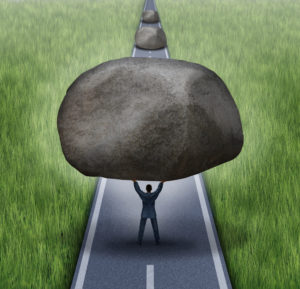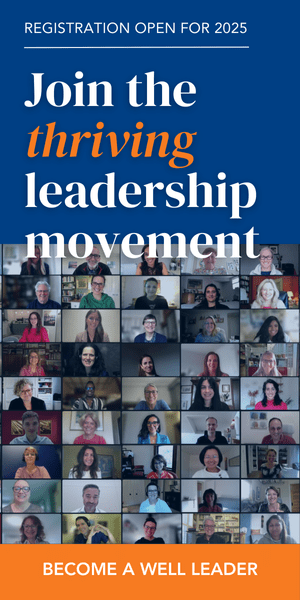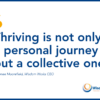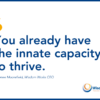It’s a beautiful morning. The sun shines, the birds chirp, and Jonas begins his walk down the long, winding road – a spring in his step – pulling his wagon of tools. He’s fueled by a profound passion to reach his destination. He knows this will be a long trek, but these tools could make the world a much better place for everyone.
 A few days into his journey he encounters a boulder in the road. It must have rolled down from the nearby hill; however it got there, it is enormous, blocking his path completely. Yet Jonas is undaunted. He’s overcome bigger challenges before, and he’s confident someone will arrive soon to move it at least enough for people to pass. Too much depends on it. At a majestic cedar tree near the road, he makes a campfire, cooks up a nice meal, and waits. When no one shows up by nightfall, he stakes out his tent and sleeps.
A few days into his journey he encounters a boulder in the road. It must have rolled down from the nearby hill; however it got there, it is enormous, blocking his path completely. Yet Jonas is undaunted. He’s overcome bigger challenges before, and he’s confident someone will arrive soon to move it at least enough for people to pass. Too much depends on it. At a majestic cedar tree near the road, he makes a campfire, cooks up a nice meal, and waits. When no one shows up by nightfall, he stakes out his tent and sleeps.
Days later, still unconcerned that help will come (surely soon now?) but quite sore from sleeping on the hard ground, he builds a hut – just a tiny thing because he’s committed to living lightly on the planet – and a raised bed out of tree branches and leaves. The shelter and warmth are pleasant, his aching back comforted. He hums himself to sleep.
Months go by. Still convinced that someone will help eventually (it’s taking longer than expected, but “All good things come to those who wait!” he tells himself), he builds a sturdier home made out of local rocks. The stones are incredible, sparkling with hues of green and silver and taupe. His house is lovely, and he feels deeply grateful for it, for his health and wellbeing, for other people who too were stopped by the boulder and have now come together as a welcoming community. Yet in the quiet of the night, something niggles at him – oh yes, he remembers – he has still not reached his destination. Maybe tomorrow …
Like Jonas, with our wagons full of employee wellness tools, have we forgotten the larger destination to build workplaces of vitality and wellbeing?
I remember when workplace wellness made its rise a few decades ago. Executive physicals, health risk assessments, smoking cessation, in-house fitness centers, toxicity screenings, and healthy back education were among the arsenal of tools. (Expand that arsenal today with mHealth apps, fitness trackers and wearables, social engagement platforms, workspace design, lifestyle incentives, mindfulness training, and the like.) Johnson & Johnson, Kimberley Clark, Boeing, The Coca-Cola Company, and other organizations made groundbreaking strides to use wellness programs for health and safety at work and the management of healthcare costs.
I led the wellness promotion department then for a global info tech company. Although our efforts achieved life-enhancing results for individuals, like most organizations in that era, the company saw employee wellness as an afterthought rather than an asset. So I redirected my energies toward incorporating wellbeing into the very heart of what makes a business succeed – its mission and culture, vision and metrics of success, operating model, products and services, and, perhaps most importantly, its leadership.
Fast forward: today’s organizations cannot ignore the macro-forces coming together to make wellbeing a priority in our work, our workplaces, and our lives. Worldwide challenges such as pollution, lifestyle diseases, and the rich/poor divide are more pressing than ever. Wellness has become as a staggering $3.4 trillion market – one of the biggest, fastest-growing industries on earth. More and more countries are pursuing metrics to measure citizen wellbeing along with GDP. New terms are emerging in our lexicon –conscious capitalism, restorative capitalism, regenerative economy, and wisdom economy, to name a few – underscoring wellbeing with wealth.
Simply said, the belief that thriving is possible is waking up people across the planet. This awakening, in turn, is radically reshaping organizations.
In response, a contemporary form of business is growing, one that uses its culture, assets, and practices to foster environments of prosperity and flourishing for people and promote sustainable forms of growth. Within this business model, wellness is central; decisions and actions reflect a deep knowing that the health of the company is interdependent with that of societies.
Yet in most workplaces, where does wellness live? Frequently it is compartmentalized somewhere within human resources as a benefit or a set of employee programs, rather than as a core strategy for human and organizational thriving. This doesn’t give it the emphasis or attention it deserves.
What boulders block the road of progress for wellness in the workplace today? How can we redefine workplace wellness so that it has a credible voice in the most significant conversations shaping the future of business? I’d love to hear your opinion.
Interested in learning more? On 15 July in New York City, I am co-leading an executive roundtable, Redefining Workplace Wellness, with Susie Ellis, pioneer in the spa and wellness industry and CEO of Global Wellness Institute. For roundtable insights, please contact me at renee@wisdom-works.com.
READ MORE
- Ingenious Paths to Wellbeing Are Often the Simplest
- Let’s Make 2015 the Year of the Ministry of Wellness
- Leading A Thriving Workplace: Are You In The Mood?
Shutterstock Image: 160232168






